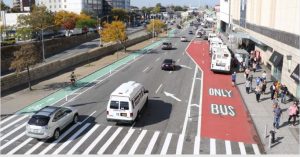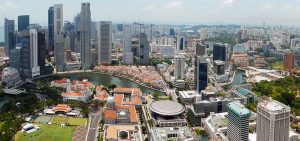Transit-oriented development has emerged as one of the most effective strategies for creating sustainable, connected urban communities. This approach centers urban growth around public transportation hubs, creating dense, walkable neighborhoods that reduce reliance on private vehicles while promoting economic vitality and environmental sustainability.

The Principles of Transit-Oriented Development
The core philosophy behind transit-oriented development involves concentrating residential, commercial, and office development within walking distance of major transit stations. Typically, this means creating higher-density mixed-use development within a half-mile radius of transit stops, where most people are willing to walk to catch public transportation.
This development pattern creates a ripple effect throughout urban areas. As more people live and work near transit lines, ridership increases, making public transportation more financially viable and frequent. Higher ridership, in turn, supports more robust transit systems with expanded routes and improved service quality.
Successful transit-oriented projects integrate multiple transportation modes seamlessly. Bus rapid transit, light rail, bike-sharing stations, and pedestrian pathways all connect at transit hubs, creating comprehensive mobility networks that serve diverse transportation needs and preferences.
Economic and Social Benefits
Transit-oriented development generates significant economic advantages for both developers and communities. Properties located near quality transit typically command higher values and rent premiums. Businesses benefit from increased foot traffic and access to larger labor pools, while residents enjoy reduced transportation costs and improved access to employment opportunities.
From a social equity perspective, transit-oriented development can improve access to opportunities for lower-income residents who may not own cars. Quality public transportation connects communities to jobs, education, healthcare, and cultural amenities throughout the metropolitan area. However, careful planning is essential to prevent displacement of existing residents as neighborhoods undergo development.
The concentration of activity around transit nodes creates natural gathering places that foster community interaction. Public plazas, markets, and cultural facilities integrated into transit stations become focal points for neighborhood life and civic engagement.
Design Elements and Urban Form
Effective transit-oriented development requires thoughtful urban design that prioritizes pedestrians and cyclists over automobiles. Wide sidewalks, protected bike lanes, and attractive streetscapes make walking and cycling safe and pleasant alternatives to driving. Building orientation and ground-floor uses should activate streets and create vibrant public spaces.
Parking policies play a crucial role in transit-oriented development success. Reducing minimum parking requirements and implementing maximum parking limits encourages transit use while freeing up land for more productive uses. When parking is provided, it should be structured and shared among multiple uses to maximize efficiency.
Affordable housing requirements ensure that transit-oriented development benefits residents across income levels. Inclusionary zoning policies and public-private partnerships can help maintain economic diversity in neighborhoods experiencing transit-related development pressure.
Global Examples and Best Practices
Cities worldwide have successfully implemented transit-oriented development with varying approaches adapted to local contexts. Hong Kong’s Mass Transit Railway system integrates directly with high-rise residential and commercial development, creating some of the world’s most efficient urban environments. Copenhagen’s metro system anchors neighborhood development while preserving the city’s bicycle culture.
In North America, cities like Portland, Vancouver, and Washington, D.C., have used transit-oriented development to revitalize urban cores and manage suburban sprawl. These examples demonstrate how transit investment can catalyze broader urban transformation when supported by appropriate zoning and development policies.
Transit-oriented development represents a proven strategy for creating more sustainable, equitable, and livable cities while addressing pressing challenges of climate change, housing affordability, and social mobility in our increasingly urbanized world.

 straightforward as it seems. While you might have brilliant ideas for your website’s name, chances are many of them are already taken or don’t quite capture your brand’s essence. That’s where
straightforward as it seems. While you might have brilliant ideas for your website’s name, chances are many of them are already taken or don’t quite capture your brand’s essence. That’s where 
